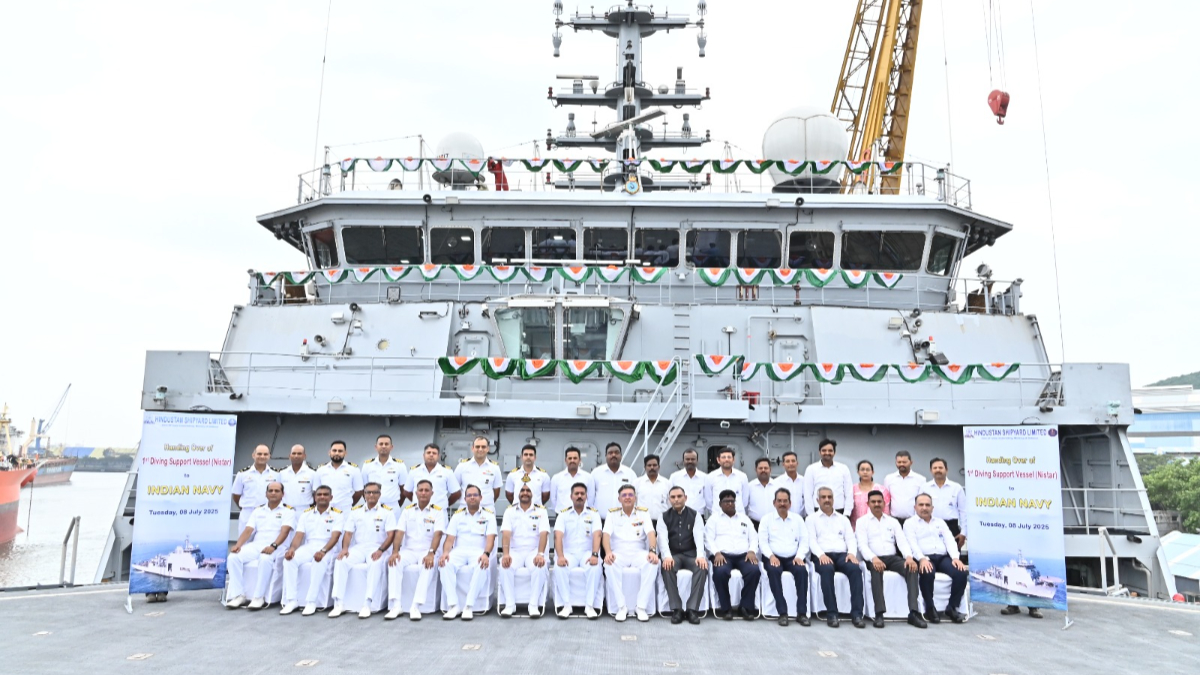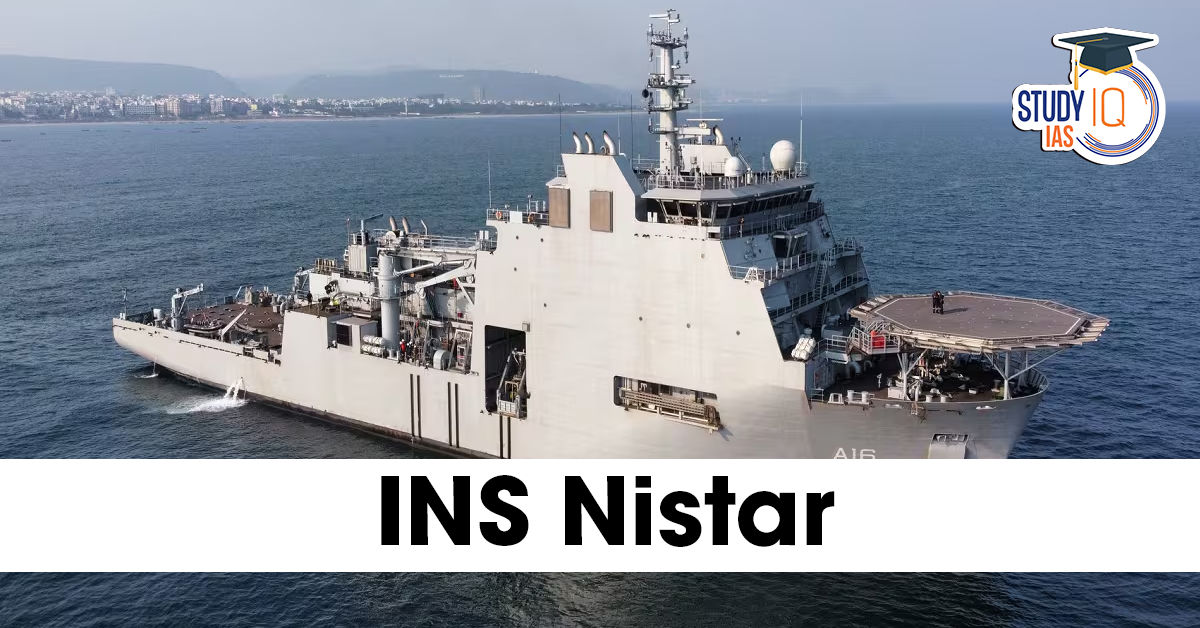Table of Contents
Context: INS Nistar reached Singapore to participate in Exercise Pacific Reach 2025 (XPR 25). The Indian Navy received the ‘Nistar’ vessel from Hindustan Shipyard Limited in Visakhapatnam.
About INS Nistar
- ‘Nistar’ is the first indigenously designed and built Diving Support Vessel (DSV) in India.
- The name ‘Nistar’ is derived from Sanskrit, meaning liberation, rescue, or salvation.
- The vessel has been constructed following the classification standards of the Indian Register of Shipping (IRS).
- It is a highly specialised ship, capable of conducting deep-sea diving and rescue operations, a rare capability possessed by only a few navies globally.

- Indigenous build (80%) mothership (MoSHIP) for India’s Deep Submergence Rescue Vehicle (DSRV).
- Capabilities: Equipped with side scan sonar, work-class and observation-class ROVs (Remotely Operated Vehicles), and expansive deep-sea diving systems for complex underwater missions.
9th Edition Exercise Pacific Reach 2025
- A biennial multinational submarine rescue drill was first launched in 1996 in the Asia-Pacific region.
- Purpose: To improve cooperation, interoperability, and readiness in submarine rescue operations among navies.
- Phases:
- Harbour phase activities include seminars, Subject Matter Expert Exchanges (SMEE), medical symposiums, and cross-deck visits.
- Sea phase activities include live submarine rescue drills, intervention operations, deep-water simulated emergencies, and Mass Evacuation Exercises (MASSEVEX).
Key Features of Nistar
- Dimensions: Measures 118 meters in length and weighs around 10,000 tons.
- Equipped with advanced diving systems, allowing Deep Sea Saturation Diving up to 300 meters
- Contains a Side Diving Stage to facilitate diving operations up to 75 meters.
- Acts as the ‘Mother Ship’ for the Deep Submergence Rescue Vessel (DSRV), used for the rescue and evacuation of submarine personnel in emergencies.
- Fitted with Remotely Operated Vehicles (ROVs) capable of diver monitoring and salvage tasks up to 1000 meters below the surface.
- Built with approximately 75% indigenous components, showcasing a major step toward self-reliance (Aatmanirbhar Bharat) and supporting the Make in India initiative.


 Advanced Air Defence Radars: Types, Comp...
Advanced Air Defence Radars: Types, Comp...
 Ion Chromatography, Working and Applicat...
Ion Chromatography, Working and Applicat...
 Broadly Neutralising Antibodies (bNAbs):...
Broadly Neutralising Antibodies (bNAbs):...

























